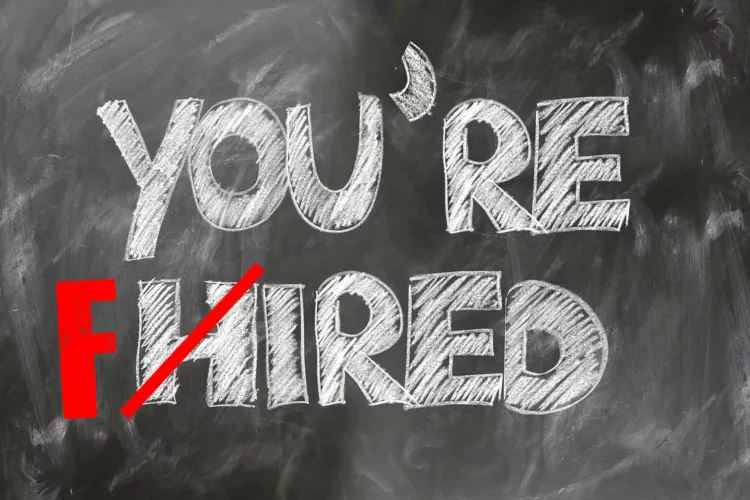Minimise risk when it comes to fire and rehire

The issue of ‘fire and rehire’ makes its way to parliament this week, with Labour MP Barry Gardiner proposing a bill to outlaw such tactics.
But what exactly is the concept of firing and rehiring, and how do you ensure you and your business stay on the right side of both the law, and your moral obligations to staff?
By January of this year, the TUC were reporting that one in 10 employees across the UK had now been asked to ‘reapply’ for their jobs.
The union insisted at the time that the tactic of ‘fire and rehire’ had become widespread, against a backdrop of employers fearing for the life of their businesses, and being uncertain about the timeline for a full return of consumer confidence.
“Invaluable support”
“Mad HR have provided invaluable support throughout the recent lockdown, providing much need HR resources for employers, just when needed.” Read the full review
So what does the ‘fire and rehire’ approach look like?
In many cases, it means an employer opting to give their staff member their marching orders, but then agreeing, or subsequently deciding to, rehire the same person – often on less favourable terms.
It has been reported that some of the largest British businesses have been engaging in tactics of this sort since Coronavirus first became our chief national concern, and, of course, the concept of forcing the hand of a staff member while disadvantaging their employee status is not going to contribute to a well engaged, productive workforce. Quite the reverse.
However, it’s important to understand that there can, and should always be, legitimate reasons for bringing to an end an existing employee contract, as well as instigating a new one on different terms.
An employer may well have an entirely appropriate or justified circumstance for wanting to revisit an agreement, however it has to be mindful of doing that within the realms of legal responsibility – and, in the interests of creating an engaged and motivated team, moral obligations too.
Perhaps the pandemic has given Company ABC the need to look at the hours of work it requires of staff; possibly there is a need to change responsibilities on the ‘shop floor’; or potentially it will be necessary to adjust pay or, certainly, financial bonuses.
In such a case, the employer would start by taking a look at the existing contract which exists between the parties, then having a clear and transparent conversation with the member of staff about what a new contract might look like.
The employee would always be made aware of what the alternatives are if an agreement cannot be reached – redundancy, for example – and they should be given chance to suggest alternatives.
If both parties agree, it’s a relatively straightforward and satisfactory “rehire” scenario, with a change to terms and conditions, which is wholly legitimate.
Where agreement isn’t reached, however, there is a risk that if the employer insists on imposing changes anyway, it could potentially cause the employee to resign, claiming constructive unfair dismissal for example. Furthermore, the damage to the organisation’s employer brand and reputation may be significant.
A last resort option sometimes carried out by a manager is to dismiss all staff and offer new employment on different terms, to some or all employees.
Again, this can be extremely tricky, and not without the potential for challenge. There has recently been a report produced by ACAS officials on this development.
Regardless of the bill being approved in Parliament, it’s clear this is an area which needs careful navigation by all concerned.
If we can help you on the issue of fire and rehire, and navigating you through the process to minimise risks and protect your employer brand, reputation and culture, please get in touch with our highly experienced team.
The content of this article is for general information only. It is not, and should not be taken as, legal advice. If you require any further information in relation to this article please contact us.
There may be occasions where the articles contain links to external websites. We have no control over the nature, content and availability of those sites. The inclusion of such links does imply a recommendation or endorse the views expressed within them.



